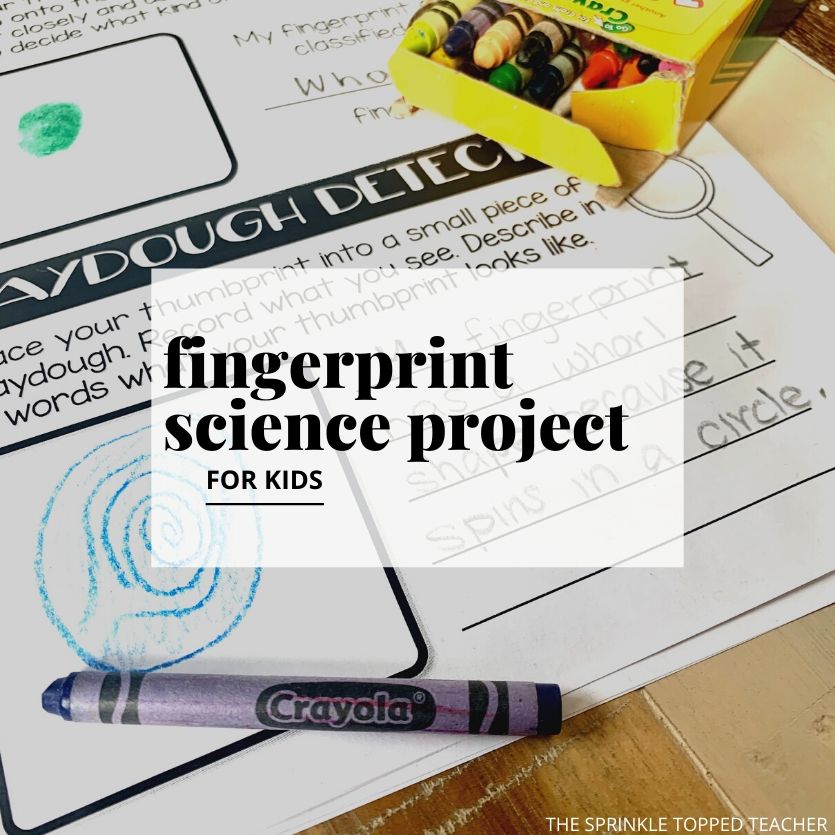
Fingerprint Science Project for Kids
Few things are sweeter than a group of students with little magnifying glasses working on their fingerprint science project for kids!
However, squeezing a science project into our already packed schedules, can seem impossible.
Most of the science projects in our curriculum are overwhelming.
You have to use a million different materials and have at least an hour to complete each experiment.
Sometimes I just want to be able to teach a 20-30 minute science lesson. Why is that so much to ask?
I started doing mini science lessons that focused on the scientific method whenever I could. This made science so much more manageable for me!
Adding in mini science lessons like the Fingerprint Science Project for Kids experiment, has helped me to teach science more often. Plus it takes the stress away from planning and prepping elaborate experiments!
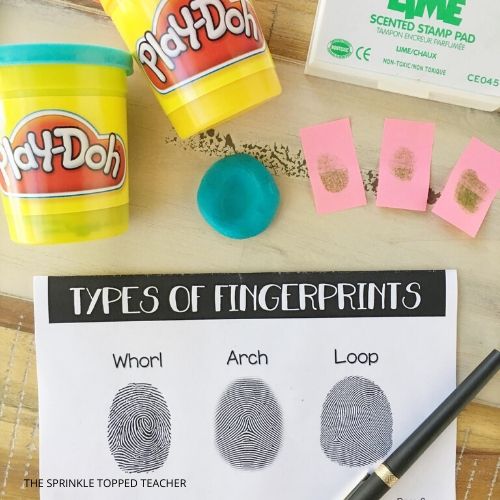
Fingerprint Science Experiment for Kids:
This science project was super fun because the class got to work like real detectives and learn the science behind fingerprints. Students used Play-Doh and ink pads to examine their different fingerprint patterns and identify the scientific names of each fingerprint.
Who knew it would be so easy teach a little forensics lesson to elementary kids?
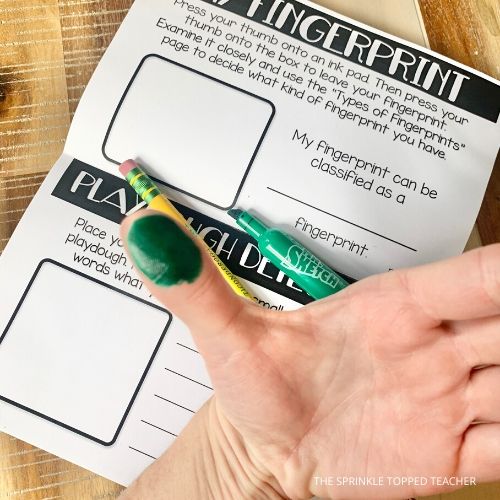
Experiment Set-Up:
I collected 6 ink pads (borrowed from other teachers in the building) so that I’d have one for each table.
Teacher Hack: One year I didn’t have ink pads so I just had kids color their thumbs with Mr. Sketch markers and it totally worked!
I also use Play-Doh so students can evaluate their fingerprints in different materials. Plus, the kids loved squishing their fingerprints.
We used little magnifying glasses that I already owned! The students thought those made them REAL scientists!
I loved these fingerprint mini-books because I like to have something guiding our learning. I seem to get off track easily while teaching science. (Oops! It’s just too fun!)
The mini books are super helpful because it guides the class through the steps of the scientific method and teaches the actual science behind the lesson. These are the mini books we used.
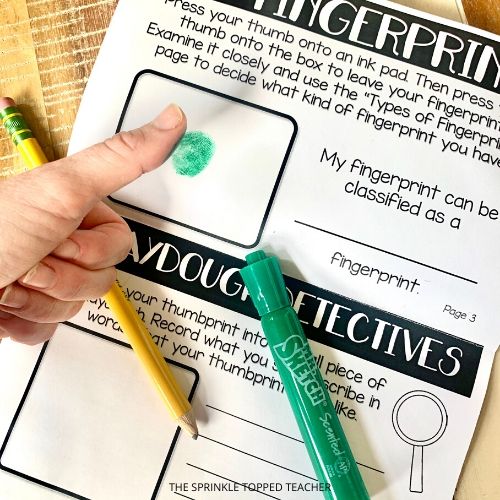
Teaching the Fingerprint Science Project for Kids:
We started off by reading through the science behind fingerprints. I used the fill in the blank version for my class.
Then we used the ink pads to capture our own fingerprints and determine which type we had! The kids always get SUPER excited during this part. They are too cute with their little magnifying glasses, working like scientists!
Next we use the Play-Doh and discuss whether or not that changed what our fingerprint looked like. Plus, it sneaks in some adjective writing practice. Shhhh!!

After that, the students get to work with a partner to compare and contrast fingerprints. (Again, sneaking in some ELA skills!)
The last section shares some really interesting facts about fingerprints. I had no idea koala fingerprints are almost identical to human fingerprints!
Teachers also love the Grow Your Own Polar Bear Experiment with gummy bears!
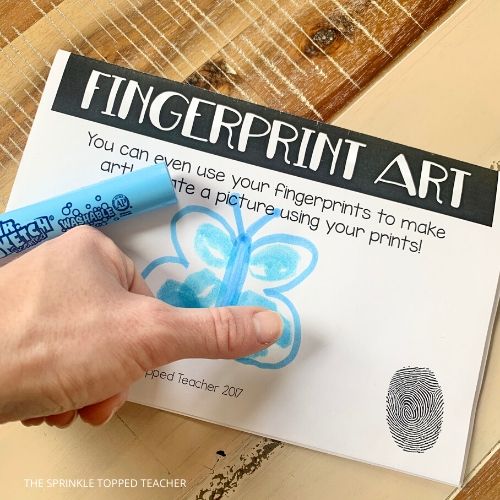
Click HERE to grab the Fingerprint Science Project for Kids booklet!
Here’s what other teachers are saying:
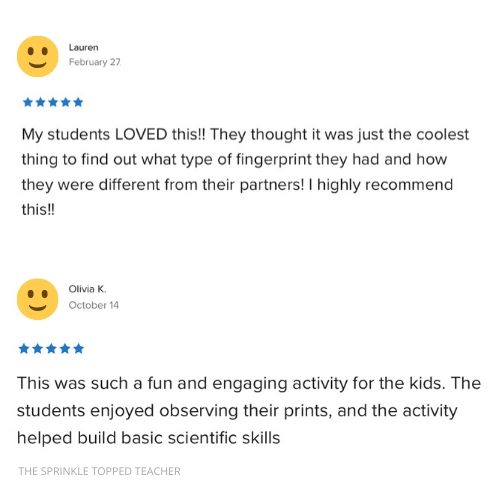
Conclusion:
I’m definitely learning that science doesn’t need to be so difficult and overwhelming.
Breaking it into mini-lessons has definitely helped me to fit more science in over the years!
This Fingerprint Science Project for Kids was definitely one of the easiest I’ve done. Plus the students absolutely loved pretending to be detectives for the day.
I have kids come back years later and they still bring up this experiment. That’s the sign of a good lesson!
Ps. I actually made a whole bundle of science activities! You can check them out in my TpT Shop or in The Sprinkle Topped Shop where you can use code: THANKYOU to save 10%! Both bundles are exactly the same. It just depends where you prefer to shop from.
How often do you teach science? What would make teaching science easier?